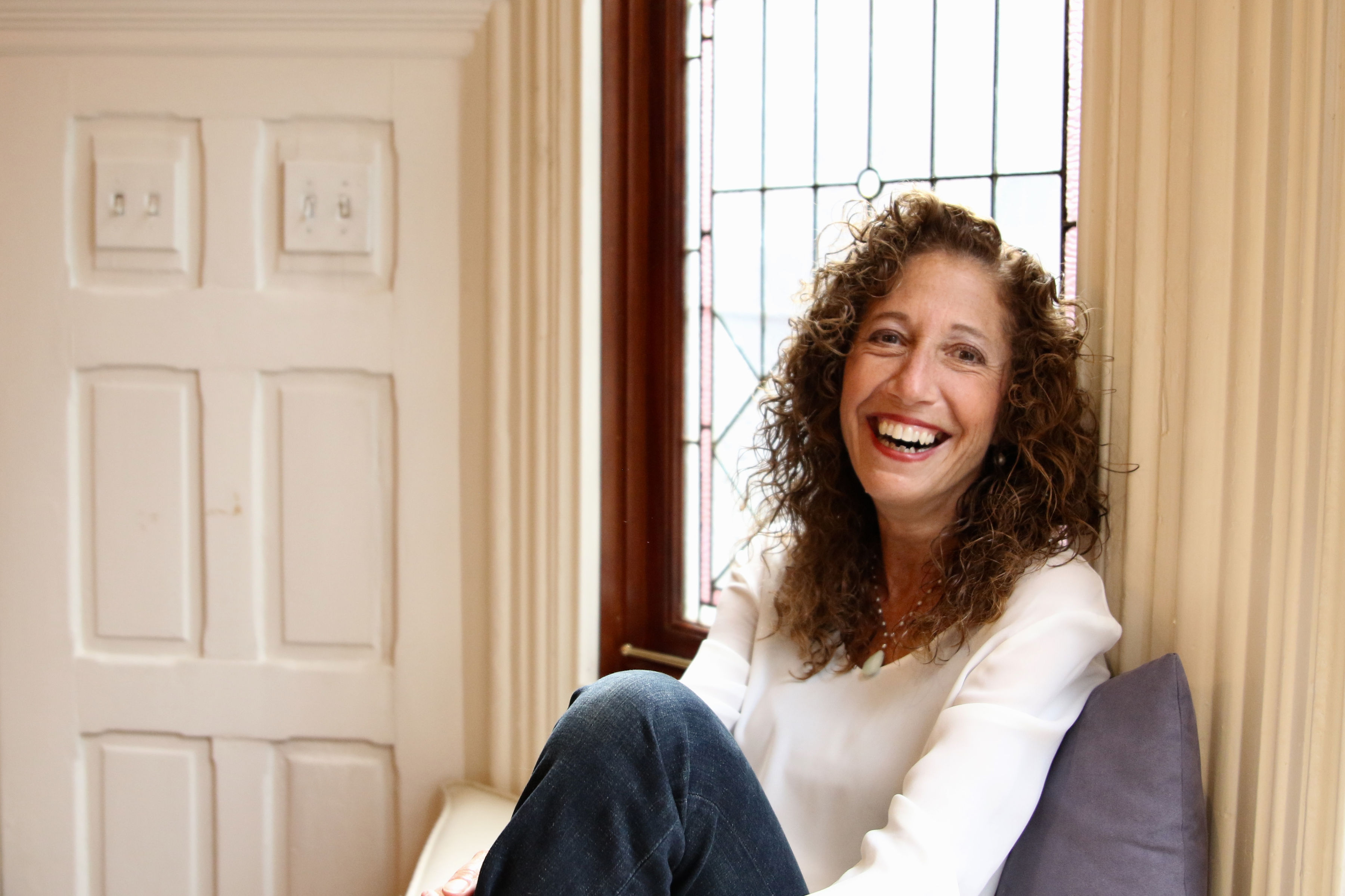I was born and remain today a highly sensitive person and, despite the challenges it has posed, I also consider it one of my greatest strengths. I credit it for making me highly perceptive and analytical. I believe it fuels my capacity for empathy and gratefulness. It makes me care so deeply about being an authentic listener. It enriches my relationships. It is an intrinsic, cherished part of who I am.
***
As a child, my sensitive nature fueled my zest for life, and my unconditional love of people, animals and pretty much anything and everything that came my way. It certainly contributed to my highly affectionate manner and compelled my desire to make people laugh. I imagine it also played a big part in making me such a talker. Pity my parents and siblings for having such a loquacious child in the house who was also a bit hard of hearing, so the voice-volume was always painfully high.
Being such a sensitive child had it downsides too. When a playmate at the playground used a tone that didn’t feel good, or I accidentally stepped on an ant, my typically positive thought patterns would take an unpleasant turn at the drop of a hat. Self-doubt trumped confidence, curiosity and wonder plummeted, faulty assumptions won over facts, ‘I’ became more important than my usual ‘we’ mentality, and other counter-productive mindsets filled my mind. Then, as uncontrollably and as quickly as they came, those negative thought patterns would dissipate and I was back to my light-hearted, silly self again.
***
When I was 10 years old, the unthinkable happened. My beloved mother lost her battle with breast cancer, and my heart split into a million pieces. She was the pillar of our family, the nurturer, the one whose arm was always soft and warm against my face in winter, and equally cool and comfy in the throes of our hot Philly summers. I had clung to those arms for dear life, and now they were gone.
My already sensitive mind ran wild and quickly filled with the classic self-centered ideations and assumptions of a child who has experienced significant trauma:
“She left me because I was unworthy.”
“I somehow caused her illness.”
“I didn’t take good enough care of her while she was sick.”
“I am a bad child, a bad person altogether.”
“I’m lost. Floating. Numb but full of pain at the same time.”
My mind was unstoppable. Negative mindsets were running rampant. My mind was not my friend. My mind was, in fact, my enemy, or so it felt at the time.
***
Thanks to my family and a strong community of friends, I did not disappear into the abyss. I managed to find some semblance of balance, absorb the warmth of those around me, regain my zest for life and reclaim my precious childhood.
At the same time, however, my pre-adolescent self was still holding onto this faulty assumption that I, we, all of us have no control over our mindsets, our thought patterns, our frames of mind, or however you want to refer to the lever that drives your behaviors, your relationships, your choices, your capacity to live and thrive to your maximum potential.
I firmly believed during my teen years, and even into my twenties that we all lived at the mercy of whatever thought patterns decided — of their own volition, not ours — to fill our mind at any given moment. This conviction caused me great discomfort and certainly impacted my choices, my relationships, my self-confidence, my career and so much more for longer than I care to note.
***
Then, one day, at no particular time and without any exciting provocation that I can point to, it hit me:
My mind doesn’t own me.
My mindsets don’t define me.It is up to me to select, tend to and continually monitor the thought patterns that I want to drive all aspects of my life.
I NEED TO GAIN OWNERSHIP OF MY MIND.
As Claudia Chan, Founder of the S.H.E. Summit, said during an event held by the Ellevate Network in September 2016:
“We need to get really good at managing our mind.”
Oh how right she is. We need to be good at managing it, and we need to own it.
Our mindsets drive our choices, our attitudes, our interactions and relationships, our performance and productivity, our sense of self-worth, our stress tolerance, our concern for others, our overall capacity to thrive.
To be our absolute best selves — for ourselves and for others — we must gain ownership and be great designers and managers of our mind(sets).
We do have a choice about the mindsets/thought patterns that we let drive our thinking and in turn our behavior, our decisions, our relationships, our sense of self and purpose, our lives.
We do get to adopt and ultimately embed healthy, productive, wonderfully rewarding mindsets in our brains and rid ourselves of those that don’t serve us well.
This epiphany changed my life.
From that moment on, I understood that it is largely within my power and also my responsibility to tend to my thought patterns. It is up to me to ensure I possess and continually strengthen the mindsets that I feel serve me best, and to do the hard work of kicking to the curb those, often long-held negative mindsets, self-perceptions and mental tapes that had been holding me back from giving, getting and ultimately thriving to my absolute maximum potential.
***
I am hopeful that sharing this personal story has helped embolden you to take ownership of your thought patterns and convinced you that your mindsets don’t define you. You really do have the power to define them, and it is essential that you do so.
Below are just a handful of initial steps you can take to gain a (greater) sense of control/agency over the mindsets that drive your decisions, actions, relationships and all other facets of your life.
1. It starts with:
– Believing it is possible.
– Being forever grateful for your wonderful mind.
– Committing to doing the hard work involved.
– Learning how to be a conscious, active participant in your mind.
– Being consistently kind, supportive & patient with YOU.
2. Learn how to distinguish your assumptions from the facts. We all make assumptions. It’s a key tool our brain uses to distill and make sense of vast amounts of information, our interactions, our experiences, our choices, etc. We also tend to make assumptions when trying to dispel negative emotions. The key is to be able to identify when something is an assumption, and to be able to distinguish your assumptions from real facts. Move away from (what we all do at times) treating your assumptions as guaranteed truths or outcomes and basing your actions on unfounded and, too often, counter-productive assumptions and judgments.
3. Keep reminding yourself that your mindsets/thought patterns don’t define you. You define them. Make this a mantra for you.
4. Know how to identify your emotional trigger points, i.e., the personality types, environments and situations that trigger negative emotions from a past relationship, interaction and/or experience that is no longer relevant and you would be inappropriately applying if you deferred to it in the current situation. Learn how to let those emotional triggers flow on by rather than letting them the lever that determines how you handle a given situation.
5. Learn how to recognize and then objectify what are simply your ‘worry thoughts’, not facts or guaranteed outcomes. Don’t let your worry thoughts drive your choices and actions. Create distance between you and the negative thoughts you are having about what could happen, about a potential negative outcome.
6. Be aware of what Dave Gray, in his book, Liminal Thinking, calls ‘Self-Sealing Logic’, i.e., the often seemingly logical, yet deceiving line of thinking our mind adopts to convince us that a faulty perception we have about ourselves (or others) is true. When we defer to our ‘self-sealing logic’, we base our actions on false information. Instead, we need to become adept at taking a step back, challenging our often speed-of-light assumptions (based on old experiences and information) and respond to the situation at hand based on real and relevant facts and circumstances.
7. Become really good at recognizing when your mind is ‘auto-piloting’, i.e., defaulting to long-held judgments and faulty assumptions that may not have any relevance nor serve a productive role in the actual situation at hand. Hold yourself accountable to pausing before taking action in an uncomfortable situation and taking the time to identify and challenge your assumptions and, equally important, separate your emotions from your choice of options. This positions you to make a conscious choice as to how you want to handle the situation at hand in a way that is directly relevant and will help ensure the best outcome.


